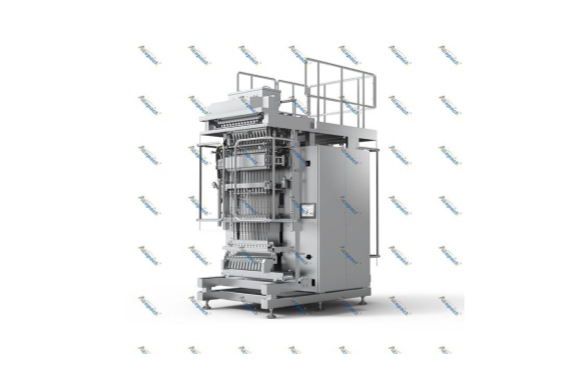
Functional Differences
Multi-Lane Packaging Machine:
- Designed for high-speed, high-volume packaging.
- Uses conveyors and precision control systems to evenly distribute products into multiple lanes.
- Forms, fills, and seals bags in a continuous, automated process.
- Suitable for granular, non-sticky products.
Horizontal Packaging Machine:
- Automates bag formation, filling, and sealing horizontally.
- Versatile with various packaging materials and bag types.
- Ideal for powders, pastes, and granular materials.
Efficiency and Versatility
Multi-Lane Packaging Machine:
- Excels in large-scale production environments.
- Capable of handling diverse product specifications and shapes.
- Offers customizable bag styles and sizes to meet market aesthetics.
Horizontal Packaging Machine:
- Offers flexibility with adjustable bag types and sizes.
- Simple structure facilitates easy cleaning and maintenance.
- Fast packaging speeds make it cost-effective for a range of applications.
Cost Considerations
Multi-Lane Packaging Machine:
- Higher initial investment due to complexity and precision.
- Professional maintenance is required, with associated costs.
Horizontal Packaging Machine:
- Lower initial investment and maintenance costs.
- Components are straightforward to replace, extending equipment lifespan.
Final Thoughts
When deciding between a multi-lane and horizontal packaging machine, businesses should weigh factors such as production scale, product characteristics, cost budget, and market demands. Multi-lane machines are ideal for high-speed, high-capacity environments with aesthetic packaging needs. Horizontal machines, with their versatility and cost-effectiveness, are suitable for diverse packaging materials and adjustable bag types. Regardless of the choice, maintaining the equipment is crucial for long-term stability and maximizing production value.




